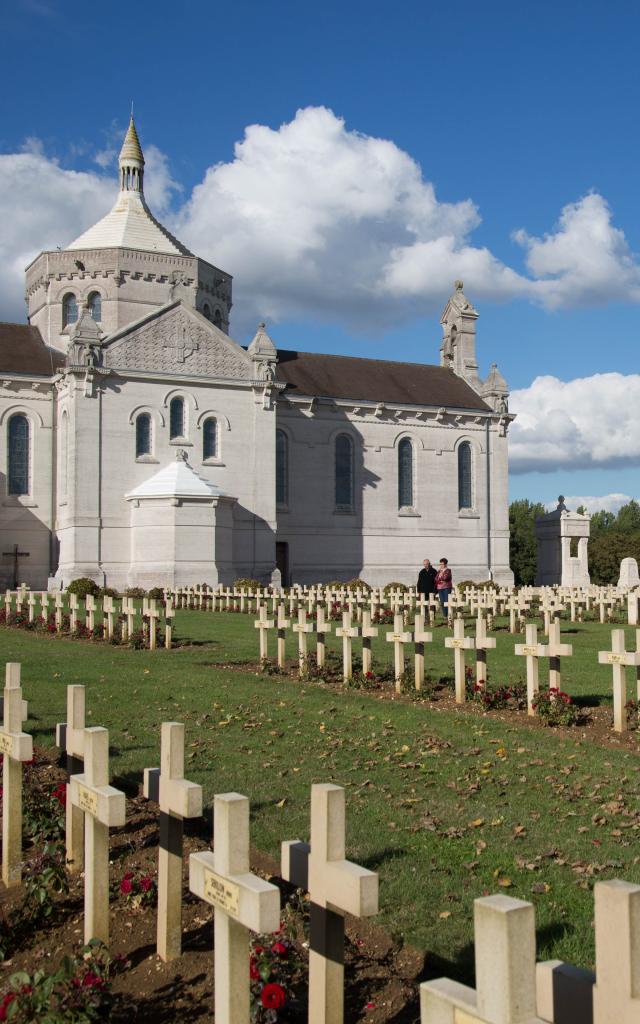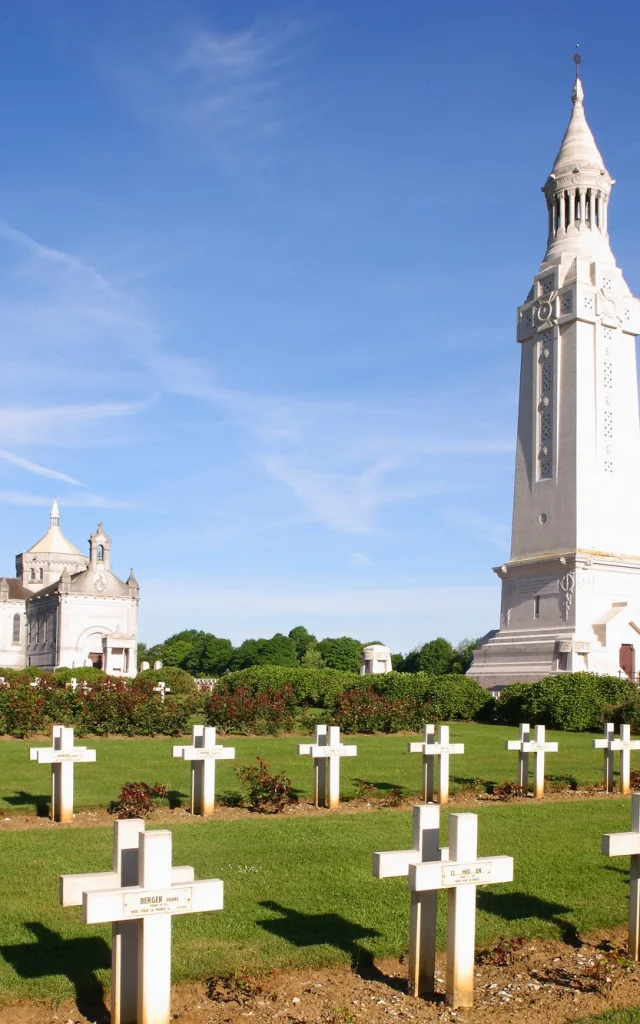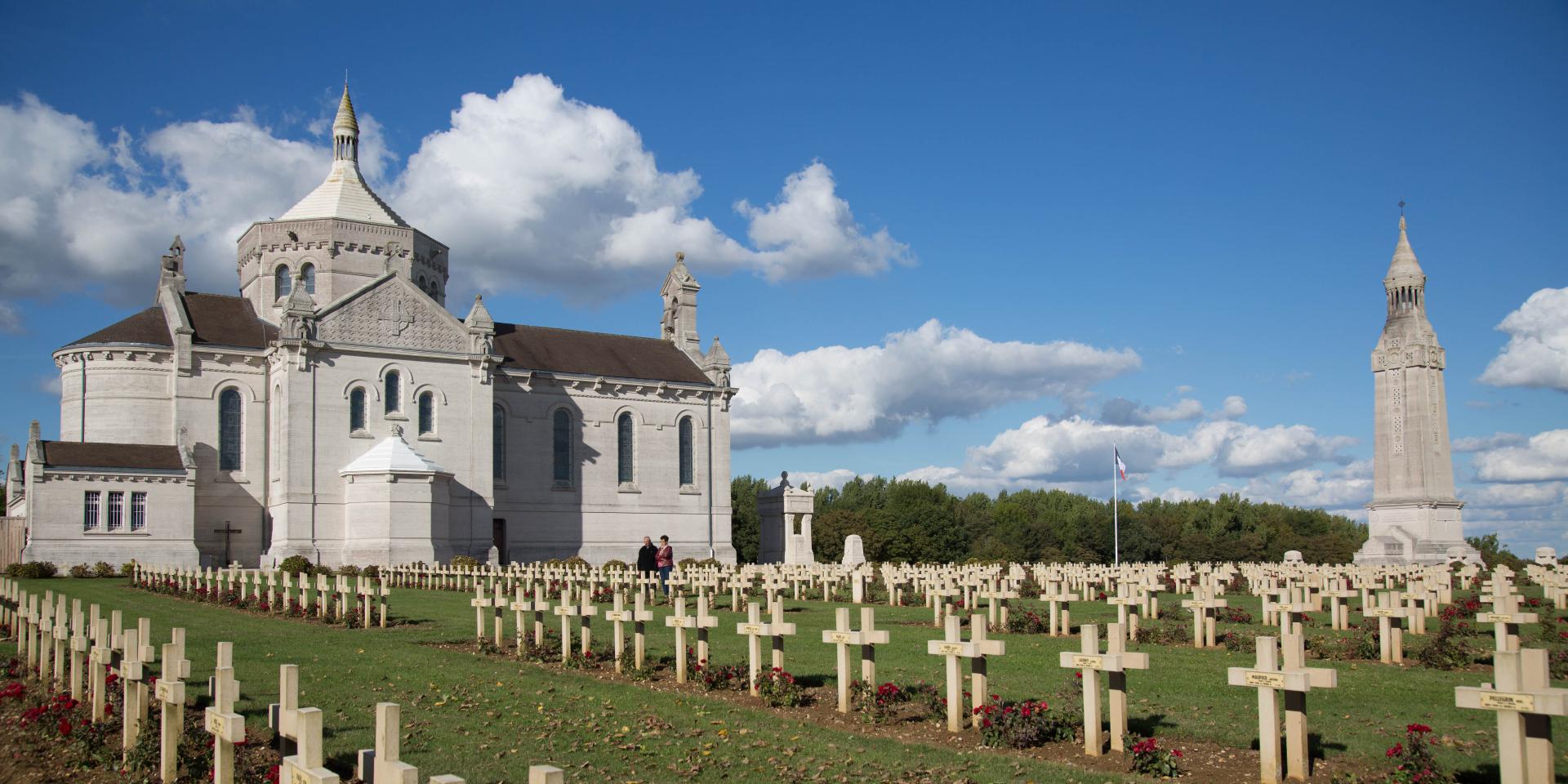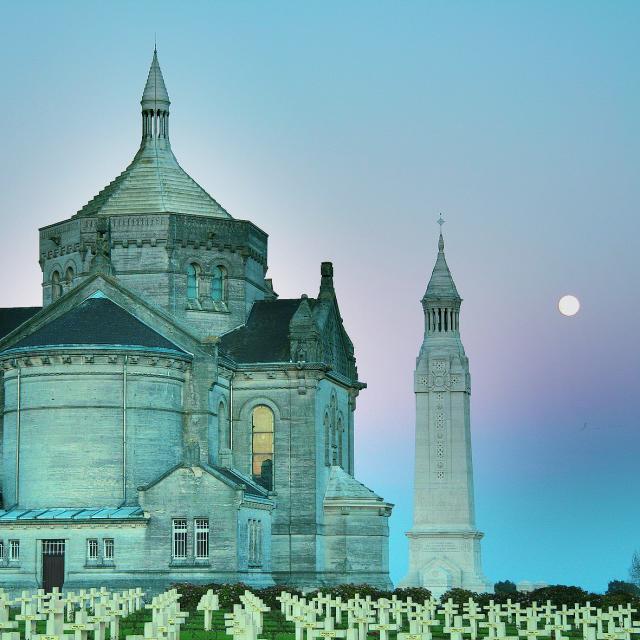At the top of the hill
In the aftermath of the First World War, the hill of Notre-Dame-de-Lorette was chosen by the French government to house the remains of French soldiers from more than 150 cemeteries on the Artois, Flanders, Yser and Belgian fronts. 20,000 graves, as well as the remains of 22,000 unknown soldiers grouped in 8 ossuaries, are gathered there. Notre-Dame-de-Lorette is the largest French national necropolis. A basilica and a lantern tower were built there. At the foot of the lantern tower, a crypt contains 32 coffins of unknown soldiers from all the French wars of the 20th century.
 French National Necropolis of Notre Dame de Lorette
French National Necropolis of Notre Dame de Lorette Notre-Dame-de-Lorette National Necropolis. Ablain-Saint-Nazaire. Pas de Calais
Notre-Dame-de-Lorette National Necropolis. Ablain-Saint-Nazaire. Pas de Calais




